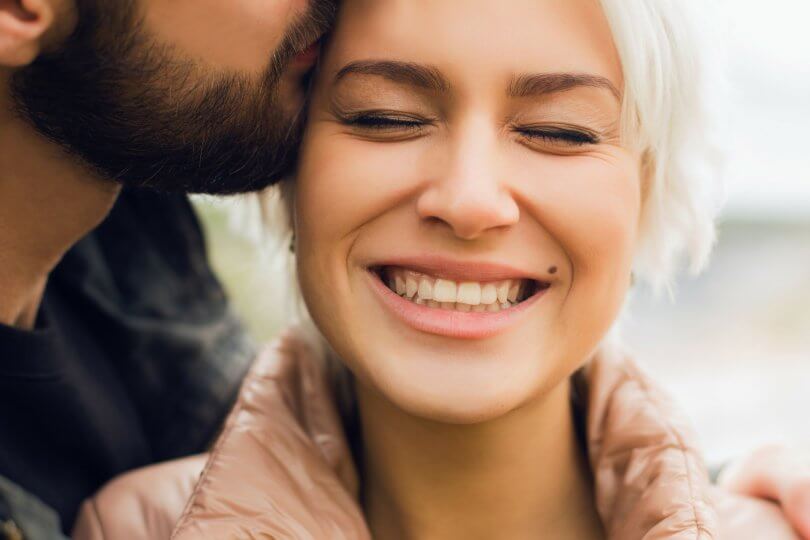For all those on the Path of Awakening, may we all be inspired to surrender.
These days when we think of Tantra, we think of experimenting with sound, movement and sex, but the path of Tantra as it was created about 1500-1000 years ago was a dedicated path of spirituality that permeated every aspect of being. Initiates would undertake intensely disciplined practices to go beyond the limited perceptions of the mind, and often took months or years as a renunciate, away from their homes and families, away from anyone they knew and essentially, away from themselves.
Taking away sensorial input and committing to a practice of mauna, noble silence, has been a practice in every mystical awakening tradition since documented human history. It may seem extreme now, but it was common for rites of passage and initiations into different phases of life, especially for those who were healers, shamans and people with a longing for God–for the Divine spark manifest in our very being.
When I decided to apply for the 49-Day Silent Retreat at Hridaya, I didn’t think of any of those things. I just felt a longing in my heart for solitude and said yes. They said yes, too. And then I got very scared. What had I done? Would I really spend 40 days all alone in a room? Would I go crazy and lose my mind? (two very different things, come to find out) I’m quite used to living around the world and being on my own, but this was going to be a whole new level of “on my own.”
Sahajananda, my teacher and the founder of Hridaya Yoga, created the 49-Day Silent Retreat to support those with a longing to go deep. Many who live at the school have attended and come out the other side changed, in various ways. We all face our own challenges, breakthroughs and moments of transcending. The layout is this: 10 days at a group silent retreat with the school (50-100 people together) and then 40 days in solitude at a hotel an hour away from the school. One person on the retreat is dedicated to service, cooking us sattvic vegan meals twice a day and handling our needs, should they arise. In all that time, we practice noble silence which means no talking, making sound or looking at one another, a pivotal part of the practice of mauna. After this period of 49 days, there is an additional seven-day retreat which the school allows participants to join. We had 3 days of transition before the 7 days, making a grand total of 59 days in silence.
I won’t be able to share all of the experiences, thresholds and moments of surrender I experienced in this period, or in the weeks since, and that isn’t my intention. My intention going into the retreat was to surrender, surrender, surrender; to give up control and give up “me” at every turn. So, I’ll focus on these experiences, their arising and the residual space they’ve left, which is simply Love. I will not spend time defining the concepts. If they interest you, look into the Hridaya teachings which, in my opinion, capture the essence of the spiritual path of nonduality with clarity and Heart.
This article will be raw, vulnerable and imperfect. I invite you to read with the heart, rather than the mind, and to take in the essence, not necessarily the words. May whatever you take from this writing inspire your mind to quiet, your heart to open, and your faith in the path, to rise.
The Present Moment
I’ve been on the spiritual path for a while, long enough to understand that it takes a lot of time to ripen in the vision, and the deconditioning and persevering faith it takes to break free from the collective paradigm I find myself in. I’ve spent periods of three to four months at a time in spiritual schools, and experienced that the longer the time, the deeper the dive. But I’ve still always lived in “time,” meaning the construct of days, hours and minutes. I’ve been tied to the clock since I can remember, and have lived, as most of us, fragmented between doing this and doing that.
From the first day of the retreat, I decided to let go of time completely. Let go of what day it was, what time it was, how long I’d been practicing or sleeping or doing anything. I found it easier intended than done. There was a struggle for the first week or two in solitude as my mind desperately wanted to compare how much I had meditated or practiced today versus yesterday, and especially how much time until the meal was served (we received one meal at 11:30am and one at 6pm). In the 10-day retreat, I never looked at the clock except to be at school at a certain time for sessions. Once in solitude, I didn’t set my morning alarm, didn’t time my practices and in fact, turned the clock around so I wouldn’t see the time unless I intentionally picked it up and looked. There were a few times I was struggling with practicing more or taking a break, so I was glad I did have the clock to relieve me of the feeling of anticipation. As with the deconditioning process of most things, there were a lot of patterns and tendencies to break through. For me, being able to say, “I meditated for this long” has always been a way that I value myself. My mind just loves comparison, especially comparing with myself. So, this was something to drop again and again whenever it came up.
Eventually there came a moment, maybe two weeks into the five-and-half weeks of solitude, when the idea of practicing and not practicing ceased. Where there was no separation between being on my mat or eating a meal or taking a walk on the beach. Eating a banana mid-morning became simply a continuation of awareness; eyes open or closed, walking or sitting, lying or stretching, it all became simply Being instead of doing. My teacher advised us before the retreat, “Let go of whatever you do and simply Be in joy.” So, I did. No time. No comparison. No right or wrong.
This isn’t to say there weren’t thoughts about those habitual tendencies of the mind. Thoughts were there, but at a certain point, they didn’t register as “my” thoughts or anything worth taking notice of. They just arose and fell into the background of consciousness. After a while, that background became my only identification. Instead of identifying with the waves, I sank into the ocean of the present moment.
Sleeping and Waking
I decided to experiment with sleep, a practice recommended in the Yoga and Tantra traditions. During 10-day silent retreats, I typically start lucid dreaming, not sleeping much, and remaining conscious most of the night. This time, when we went into solitude, I started an experiment where I slept most of the night lying on my back with a glass of water on my chest to keep me conscious, even when I eventually fell into the state of sleep. Within a few days, I hardly lost consciousness in the night at all, but rested deeply and maintained consciousness throughout the night.
I also found what I like to call “the sweet spot” between waking and sleeping, a deeply restful state with the eyes open or closed with a fully present consciousness and completely relaxed body and mind. I discovered this during lying down meditations, which I began practicing during solitude to relieve myself of chronic neck and shoulder pain. Soon I discovered that it put me in this sweet spot where I could stay for hours or longer.
When I discovered that this deep place could continue through the day and night, I started perceiving that time just continued to be the present moment with no interruptions except the wandering attention of the mind. And eventually that dropped away and was not a distraction.
Impermanence & Spontaneity
Another effect of the continuous present moment awareness was the feeling of prolonged spontaneity. I found myself surprised by what I chose to do in the moment, be it going for a walk, sitting in meditation, lighting incense, taking a nap, etc. I stopped planning anything, and more noticeably I stopped trying to be efficient. When I took my first Hridaya meditation retreat, this was a concept I deeply resonated with: letting go of the efficiency mind that tries to be one step ahead of the moment. This future-jumping mind gets in the way of the present moment being perfect, surprising and magical as it unfolds; it judges right and wrong based on what it thinks will be best before it actually happens. This was the existing programming of my mind.
This present moment perception led to an understanding of impermanence, a central tenet of Buddhist wisdom. The only thing permanent is existence-consciousness itself, not any thought, emotion, energy or material creation. These come and go, if we let them, and dissolve back into the Pure consciousness. As I watched every one of these rise and fall, rise and fall, I started to see the deep Truth in this teaching: that all things are impermanent. ALL things. This understanding led to the ability to surrender more and more.
I found myself letting every day, every meditation and yoga practice be different. Instead of grasping at how they should be or if they went deep or what I was experiencing, I just let them be exactly as they unfolded. And in that unfolding was the most beautiful state of Joy. The Joy of Being in the moment. I know this sounds like every clichéd spiritual teaching. I can hear that. And yet, it’s exactly what I felt and still feel.
The only intention I carried into my days was to create the best conditions in each moment. That meant following the needs of my body, like eating less and less as my metabolism slowed way down, and moving less and less as my heart rate slowed way down. Or even going for a run on the beach if there was a big upsurge of energy–if something felt different, I went with that exactly as it was. It may not seem like rocket science, but for me this letting go of all expectations whenever I noticed them come up led to a huge shift in how my days played out. And continuing to be in the present moment now that I’m teaching and writing again brings this Joy more and more into whatever I’m doing in the world.
Challenges
There were hard moments and hours. For me, three demons especially plagued my thoughts, and it wasn’t until I could automatically send compassion to the thoughts and people they were about, that they began to dissolve.
The first was about my intimate relationships and letting go of expectations around what things would look like when I came out. There was a solid week where this came to my mind every day. Sometimes I ignored it and let it float by, which it always eventually did. And sometimes I looked at it, examined what was sticky, what stories it triggered for me and why it kept coming back again and again. I began to uncover that some thoughts simply are triggered by imagination or memory of other thoughts. They come up and overlap until the mind/ego grabs on and starts to weave a story. And some thoughts just come up because we’ve deemed them important and have programmed our mind to go to them again and again. This is a thought pattern, I realized, that I had deemed important, as meaning something about “me.” And that’s the level where I had to let it go. Nothing that happens in my relationships means anything about who I am or who my partners are.
About this, a passage from my journal: “During a series of external events last night, I watched the monkey mind. It really does attach to the next thing that comes up bigger than what it’s currently attached to. One thing seemed so big and all encompassing for the mind, then the next totally superseded it, then the next. The one before disappeared (for a while) because the mind just dramatizes and tries to get something wedged in the hamster wheel to play over and over again. When the energies of the Heart are more aroused than the mind, it all dissolves again right after it comes up. There are many thoughts still, but they just don’t matter so much anymore. They just come and go like trains passing by, but the awareness of the whole station is greater.”
As a reflection, having been home a few weeks now, I’m so grateful to have spent time looking at the sticky points. Of course, the expectations that were secretly hiding away about what my intimate relationships would look like three months later, do not live up to their stories. And external life has shifted. In a way, I tested myself to see what would happen if such and such a story came to be. I prepared myself for the things that have actually happened and for possible situations in the future. It feels like my heart has expanded to take in every possible outcome, instead of weaving through what makes me comfortable and avoiding the discomfort. And, of course, it’s impossible to avoid discomfort when relating with other people.
The second demon was a life situation in which I felt I had failed just days before I left for the retreat. This thought came up again and again and again, day after day after day. At first, I spent a lot of mental energy justifying my actions, saying to myself “it’s okay that I did that,” and creating a whole story about why it was okay. So basically, I was in big, fat resistance to what was, and the story I created about it. When this thought pattern would begin to arise, it pulled all of my attention and I couldn’t focus on anything else for minutes or longer. And then one morning I was journaling and realized that this was what was meant by a demon. I remembered the story of the Buddha facing his last demon in his final meditation under the Bodhgaya tree and sending unending love and compassion until it dissolved. So I tried this, and . . . it worked. It worked like a magic wand. When I opened my heart instead of closing it off and being in resistance, my pain and reaction dissolved, my hurt dissolved, my identity around the story dissolved. I sent compassion to the people affected in the situation and I sent compassion to myself. And within 48 hours, it was completely gone and never disturbed my thoughts again.
This became my routine when anything triggered hurt, pain or identity gripping: open the heart, breathe into the heart and send Love to anyone affected by this thought. I can tell you after experimenting with this for about seven weeks: it works. And it is incredibly purifying to the mind. Instead of creating more and more thoughts, it leaves the mind quiet, calm and still; capable of perceiving the True nature, the background of stillness, instead of being obsessed by thoughts.
My third demon was food. It usually happens that what normally challenges you in everyday life comes up in retreat. Having struggled with lifelong mental and physical challenges around food, I knew this was going to come up, and it really did. On the very first day of my 59 days, I got quite sick, and after purging my body of any food in my system, I didn’t eat a meal for the next 48 hours. Fasting is not a regular practice for me, as it usually stirs up my control issues around food and I’ve found it healthier the last few years to just eat whatever I want and create a relationship of freedom with food. But this period of necessary fasting – for my body, not my mind–felt physically very purifying, and left me quite available to the lightness of the body that was to come. And it triggered a whole slew of patterns about being happy that I wasn’t eating. For years, maybe decades, I used food to feel in control, especially the decision to not eat. Sometimes that would turn into binging, too. In this extended period of silence, I watched all of this come up – every single day. And every day I did my best to return to the Heart, return to the freedom of Pure Being, while witnessing the patterns that have kept me locked in control around food for 20+ years. I made some deep discoveries that unlocked those patterns and eventually realized this: I Am Free. Totally free to choose my relationship with anything in the outside world.
Three weeks out of retreat, I can now say that this is a lasting change. So much of my energy has been released by not constantly worrying about what/how/why I’m eating, and just listening to what my body really wants. The mind doesn’t need to be involved in these decisions at all. What joy.
Surrender
At the beginning of our journey, Sahajananda said, “The spiritual journey is about going into uncharted territories. It’s about giving up the limitations of control. It requires a constant reconnection to the unknown.” This quote stayed with me and carried me through many scary moments of surrender. At first that surrender was active, with the intention that I, Grace, am giving up something, like a pattern or habit, a piece of identity or a story of reacting to external situations.
Then one afternoon when conditions seemed the worst to sit and meditate, a fit of laughter seized me, and the surrender became beyond me. I’ve heard many spiritual teachers talk about the Divine Mercy bringing surrender, and this was the experience I began to have more and more. Instead of “me” letting go of “something,” I started letting go of me. I stopped believing I was a separate thing or that there was anything separate from me. I began experiencing the world as One.
This perception carried through to more and more moments of my day and led to deeper experiences of surrender. As the control mechanisms of my mind tried to take over, I chose to surrender and go deeper into the unknown. I opened to those moments of feeling beyond a “me;” I let surrender win over fear. And the joy just kept opening and opening to unlimited depths.
One passage from my journal around day 40 said, “Carefree, light, childlike, joyful, spontaneous, gleeful, sweet and tender. No pushing into surrender, just letting go.”
Freedom
Sahajananda often talks about a sense of transparency and availability to the Divine Flow. Around the third week in solitude, I started understanding what this meant. With no one recognizing me, seeing me, talking to me, I started to feel like a ghost. Being in a constant state of meditation, I felt I was becoming more and more transparent, full of more light and less material. I watched my body processes slow to nothing, including my digestion and my blood pressure. No mirrors, no being seen. It was the most incredible phenomenon to become as light as light and to feel like I was floating in the air.
This had a massive effect on my consciousness in that I felt less separate and more unified with everything around me; that my Being was one and the same as all things, or that perhaps there are no individual beings, just one Being of which I am a part. From my journal: “Noticing that not looking in the mirror this long creates a bit of a separation from the body – Who Am I becomes a more real question…Who is it that’s looking through my eyes? Who hears with my ears?”
After a few weeks of intense investigation of the mind, I stumbled into this state of transparency and began to see the mind as transparent. Near the middle of the retreat I wrote, “There is an unbelievable vastness of the mind – how inconceivably infinite the power of perception is. Today I felt like I was melting the mental separateness I usually experience into union.” Along with this, internal and external stopped feeling differentiated, and from this came a feeling of freedom: first in small drips and eventually in waterfalls. The feeling of Joy – a permanent joy, not the fleeting happiness experienced from external circumstances being how I want them to be – was the new state of Pure Being. And the vastness into which I was melting felt simply free. As Sahajananda says, “There is such a freedom in solitude.” Yes, I found that freedom. And now I get to play in it while doing my daily activities, making phone calls, driving and playing in life.
The day we broke silence was incredible. Tears poured from seemingly nowhere for hours. The idea of talking or looking or being on my device was so far from any desire I had. In fact, I noticed a few days after the retreat ended that I was in a desire-less state. There was nothing I wanted except to keep diving into the ocean of the Heart, the ocean of God. As I move back into my work of personal coaching, Spiritual teaching and leading silent retreats, my only desire is to offer these teachings to others so that they may feel this peace of Pure Being and Joy of the Heart in their lives. So that we may all choose to surrender our identities and live in the Bliss of Compassion that comes from the transparent expression of the Heart.
In the last three weeks, the overall sensation of integration I’ve felt is one of stability. No longer does my spiritual path feel like achieving states of consciousness. Instead, it feels like a sweet naturalness and awareness that extends and expands. I notice when the triggers of my patterns come up, and instead of reacting to them like I have in the past, there is a tender compassion for my own stories. I can see how attaching to my identities and unconscious patterns in the past has caused so much suffering, and choose to forgive myself and others when I see these memories. I notice the wandering attention of my mind with laughter, not seriousness, and let my awareness return to the gravity of the Heart. And at the bottom of all this is Love. Just Love.








